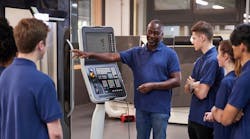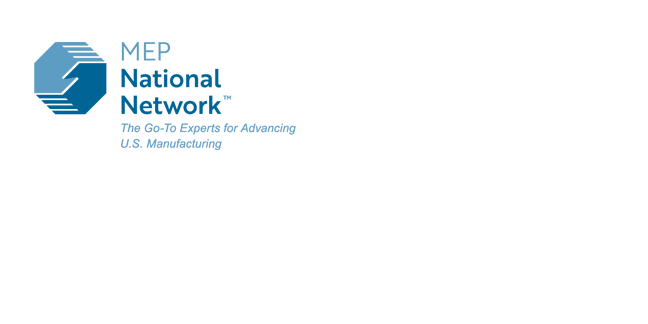Is your business struggling to manage growth in a difficult workforce environment? Simply spending money to upskill employees without a strategy will yield less than the desired results for the business and the employees. Your goal in workforce upskilling is not only to see a return on the investment for the business, but also to provide employees with career growth opportunities. An effective upskilling strategy helps to retain employees and attract new talent.
As a Senior Business Advisor at the Montana Manufacturing Extension Center (MMEC), part of the MEP National Network, I have worked with numerous manufacturers to upskill their workforce. As a first step in this process, I recommend defining the business needs and existing skill gaps. I have found that the ISO 9001 Quality Management System (QMS) framework can be a valuable methodology in defining business processes and necessary employee skill sets.
The ISO framework requires a definition of your company’s vision and mission. It also requires developing metrics for monitoring the success and effectiveness of your systems. Using the QMS structure as a roadmap, leadership can define the processes and a disciplined structure of the business. This structure enables employees to be successful in the upskilling process with defined expectations and rewards.
However, before launching an upskilling program it is important to remember that success is not solely delivering training and increasing skills or knowledge. Long-term success will depend on two things: 1) How well leadership provides employees with job ladders and articulates these career growth and development opportunities, and 2) the development of the associated pay scales, with leadership properly valuing these skills to make the advancement attractive for employees.
In this article, I will share some key components for building an ISO upskilling framework, including how the MEP National Network’s Smart Talent framework provides a proven process for maximizing attraction and retention of the most valuable employees.
Let’s begin by looking at one processing and packaging company, Such Group International (SGI), which successfully used the ISO and Smart Talent framework to maximize upskilling results to support business growth.
Developing a Roadmap to Upskilling Success
When SGI first reached out to MMEC, the goal was to implement an enterprise resource planning (ERP) system required by a new customer. The challenge was that SGI employees had no experience with ERP systems.
Keep in mind that implementing an ERP is not as simple as plug and play; it requires work to optimize the system for existing workflows. Implementation often requires software setup customization to support existing production processes or inventory management practices.
After a top-to-bottom business walkthrough with SGI’s president, Todd Such, we discussed the rapid growth of the company and constrained available resources. It became clear that business processes needed to be defined before undertaking the upskilling effort. This led to a discussion of the ISO framework and how it can serve as a tool for defining business infrastructure, processes, and responsibilities.
We began documenting process interactions, roles, and responsibilities with the ISO QMS framework. The Smart Talent methodology was used to develop career ladders with supporting training modules and a repeatable delivery process. This created an effective communication tool with clear expectations and a supporting compensation structure.
After we identified the managers who would build out the training modules, getting their buy-in was essential because they had to set the groundwork for success. They had to make sure that all employees recognized the need for the training, as well as the opportunities it would create for employees to achieve their growth potential.
Getting Employee Buy-in and Creating the Framework
Next, SGI management presented the employees with the career ladder framework and compensation structure to achieve employee buy-in. The Smart Talent framework provided a career roadmap where employees could see growth opportunities available to them. Identifying the “what’s in it for me” factor was key to maximizing employee engagement.
MMEC then worked with SGI to build out eight training modules, using the career ladder approach to incentivize employees to “ladder up” their skill levels to advance their careers.
These upskilling training modules include:
-
Operator Level 1: This training centered around basic workstation skills on one or multiple production lines.
-
Operator Level 2: Modules focused on equipment setup, adjustments, and equipment changeover tasks.
-
Team Lead: These final modules focused on the responsibilities and expectations of the team leaders in scheduling, materials, staffing, and reporting.
Most importantly, each training module included an evaluation form to assess the effectiveness of the training. This measure is a crucial component of an ISO QMS.
Upskilling for ISO, Lean, ERP: Creating Awareness
Once SGI had a framework for upskilling its workforce, I led multiple training sessions that focused on ISO, Lean, and ERP-documented procedures. The goal was to help both operators and supervisors understand the value of new QMS processes.
For example, for ISO training, we held “pain point” sessions on non-conforming materials, which could cause assemblies not to work at different stations down the line. Each person became aware of why their task was critical to their internal customer down the line.
We emphasized that their customer is not only the end customer, but the next person in the assembly process. This understanding aided in communicating the value of standard work and of documenting non-conforming material for corrective action.
We also created upskilling frameworks for Lean manufacturing. In our Lean training, we increase employee awareness of Lean principles and we encourage workers to constantly ask themselves questions such as: Is the customer willing to pay more for what I am doing? What can I do today to improve one of the 8 Wastes?
This awareness also dovetails into ERP training and implementation. Because most of the SGI employees had never worked with an ERP platform before, I started the training with a basic overview of what information is desired from the system. The understanding of desired information and a basic process flow provided a basis for learning.
Once employees realized the ERP could provide valuable information for their activities and subsequently make their jobs easier, the resistance and fear of the system were eliminated. In addition, they realized if they were to depend on this information, the accuracy of data entry was critical.
What were the business results? SGI now has documented its business infrastructure and training practices. These practices have substantially improved employee attraction and retention. Additionally, SGI has an ISO 9001 compliant system that will allow them to bid on products and projects requiring ISO 9001 certifications. Over time, this will open opportunities for new customers and markets.
Need Upskilling Help? Ask Your Local MEP Center
SGI is just one example of how upskilling, whether it is for ISO, Lean, or ERP implementation, has benefits that go far beyond compliance and industry standards. Building awareness among your employees about the importance of what they do and how their performance impacts everyone at the company creates engagement and belonging.
Reach out to your local MEP Center to learn how you can use upskilling to give every employee a clear vision of what their career path can look like at your company. The training approaches outlined above can help you increase retention and prevent new hires from jumping ship in search of better pay.
ABOUT THE AUTHOR
Doug Roberts
As a Senior Business Advisor at the Montana Manufacturing Extension Center (MMEC), part of the MEP National Network, Doug Roberts has a passion for manufacturing and small businesses, with experience in rapid-growth and turn-around environments. He brings financial and business systems implementation experience, including ERP, ISO 9001 and 13485, and AS 9100. In addition, he has a solid Lean background and implementation experience in a variety of manufacturing environments.
Sponsored by:

